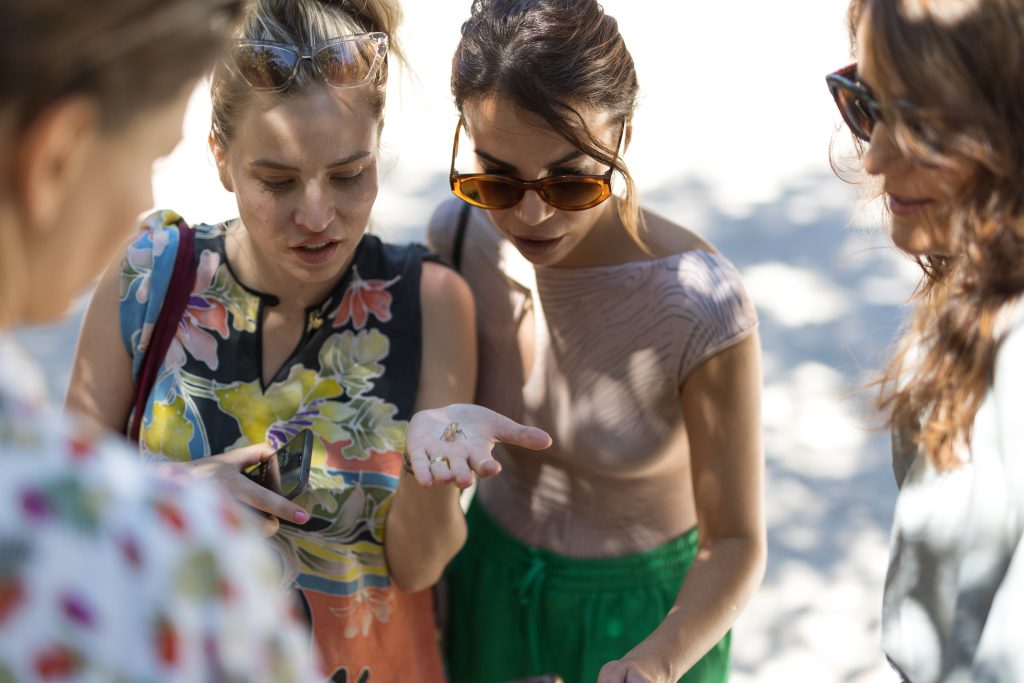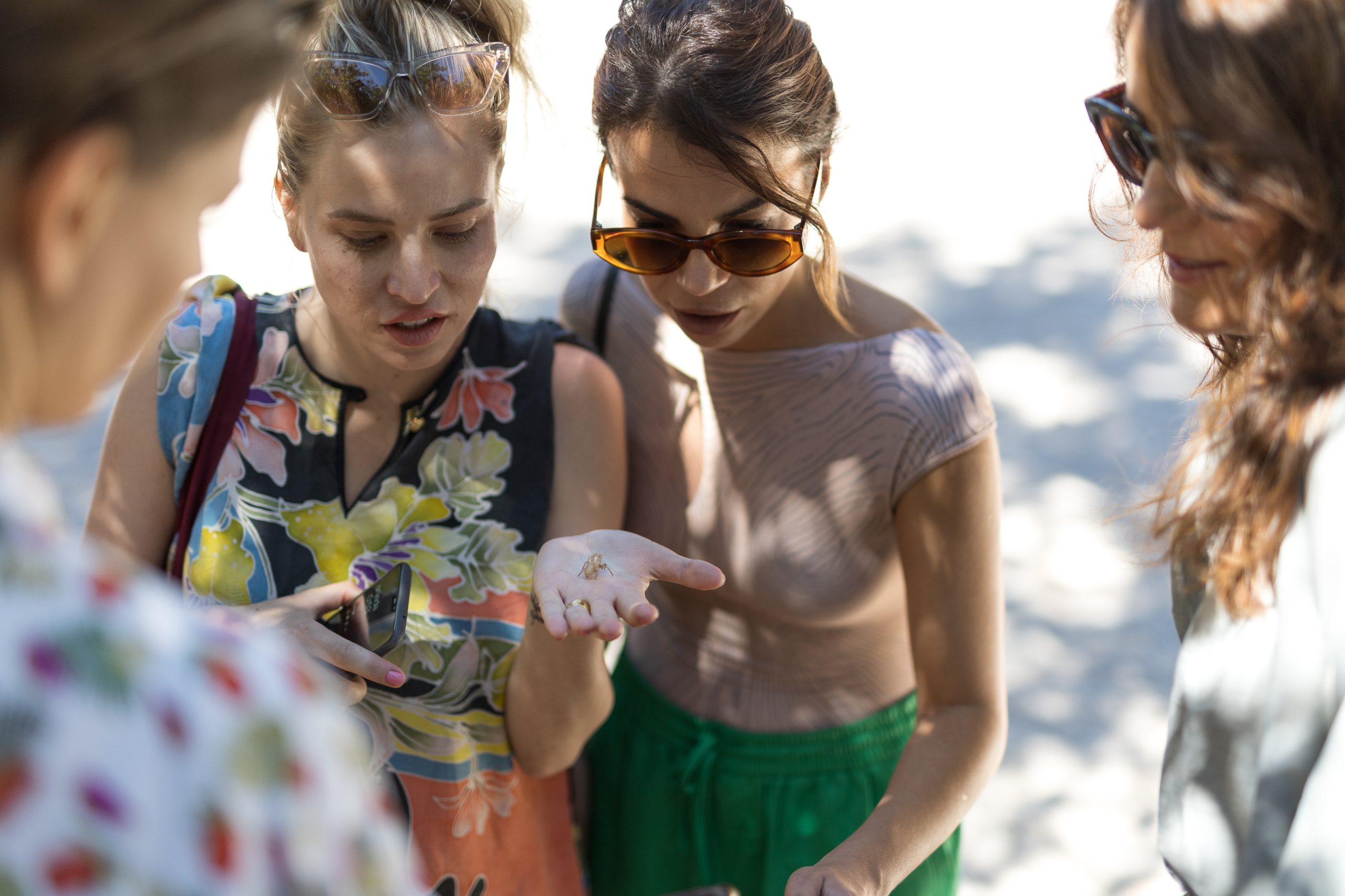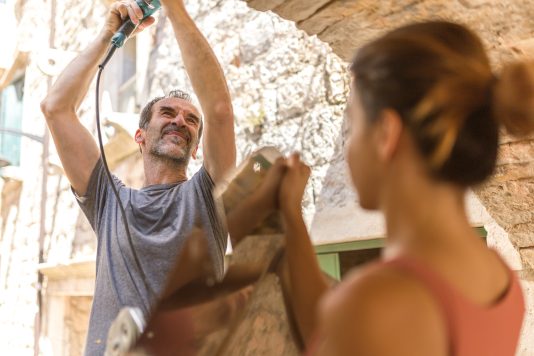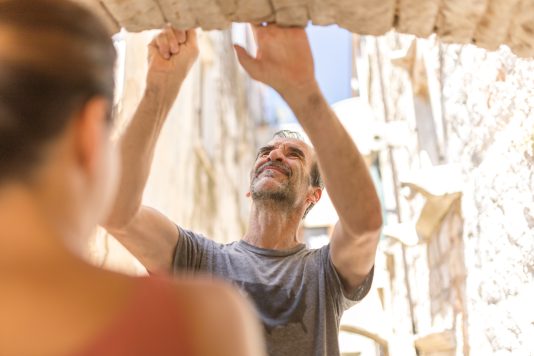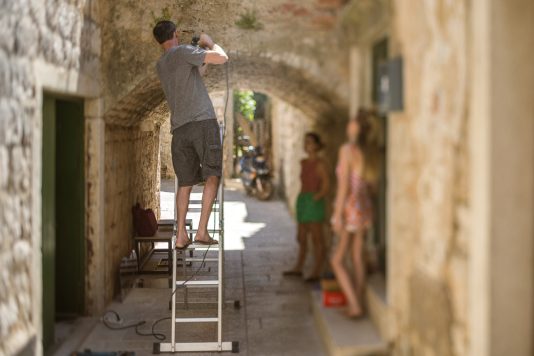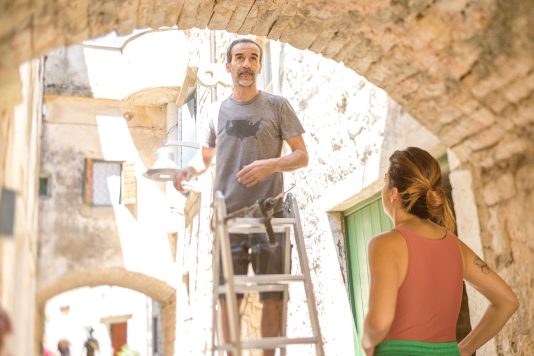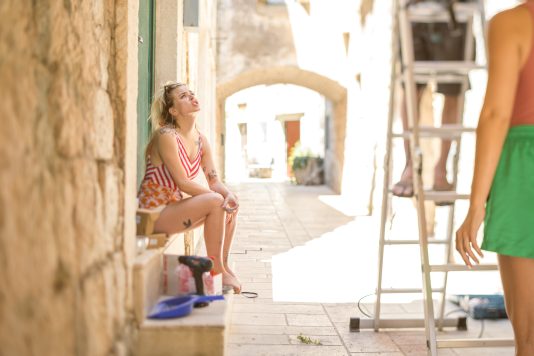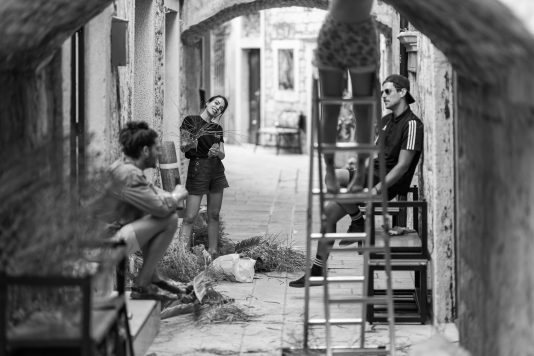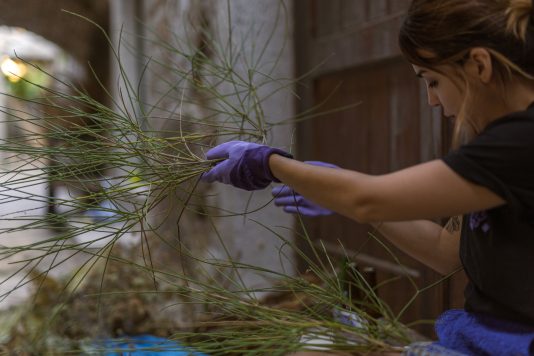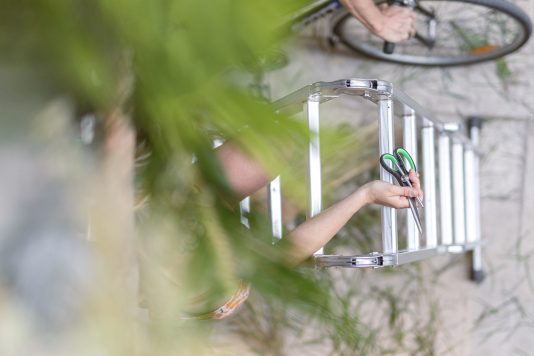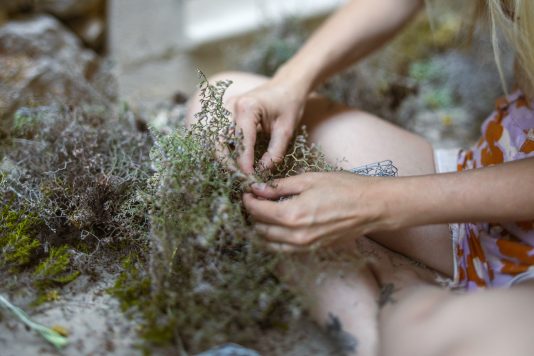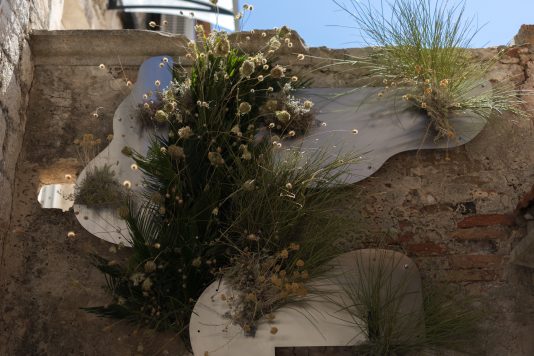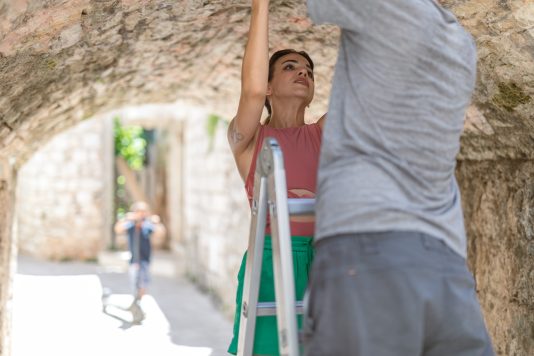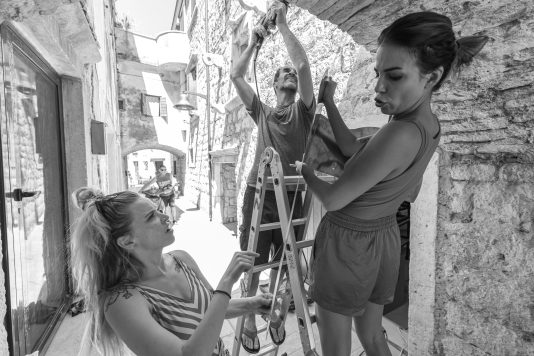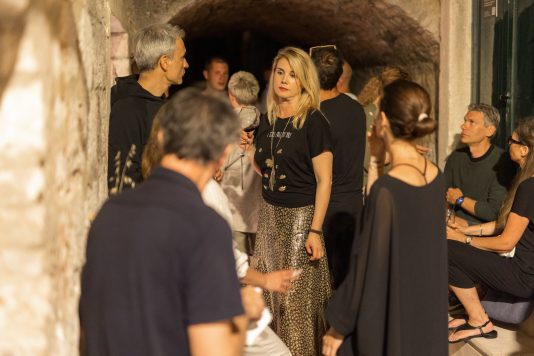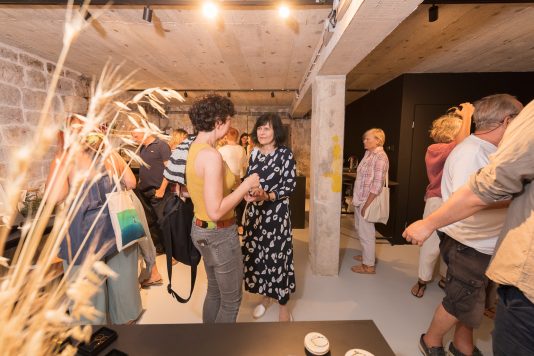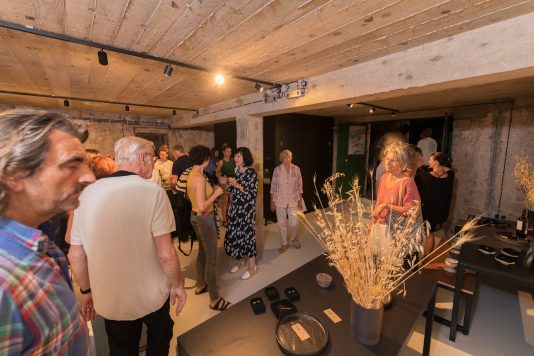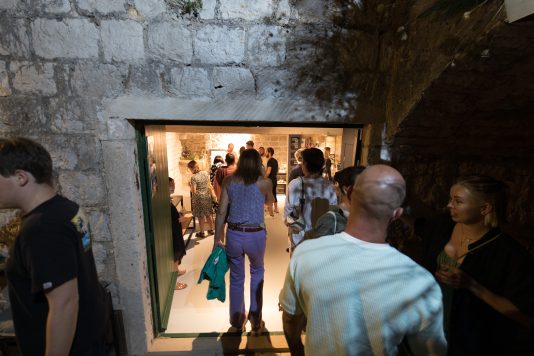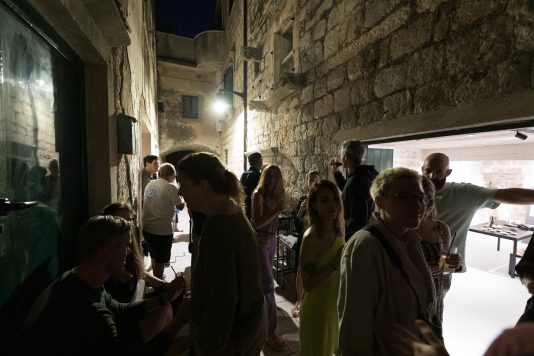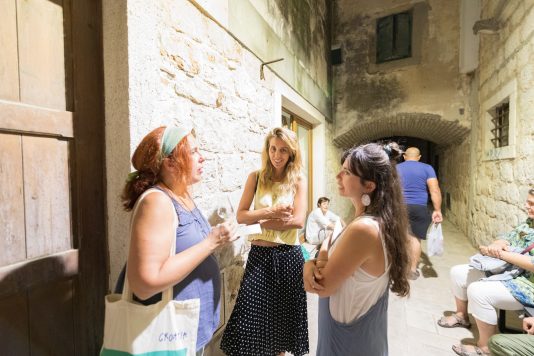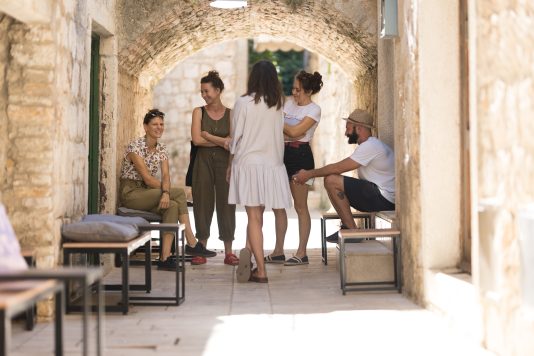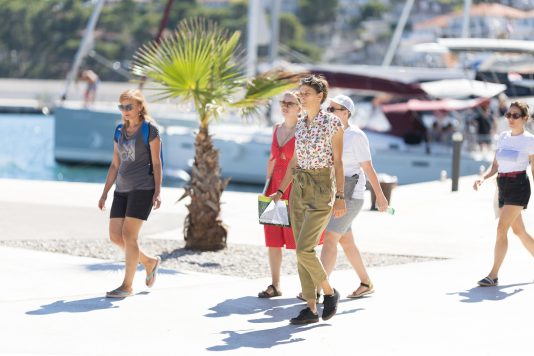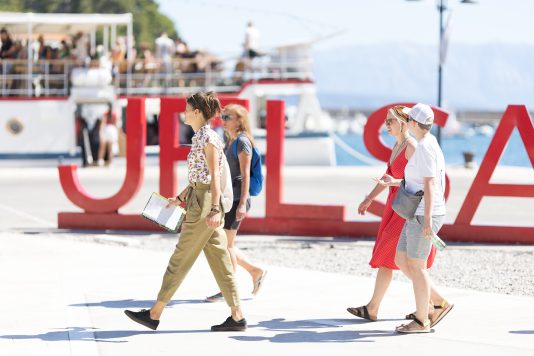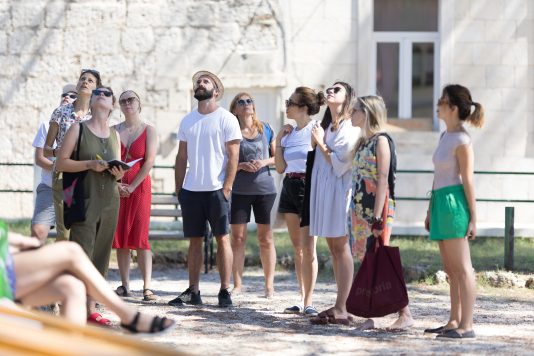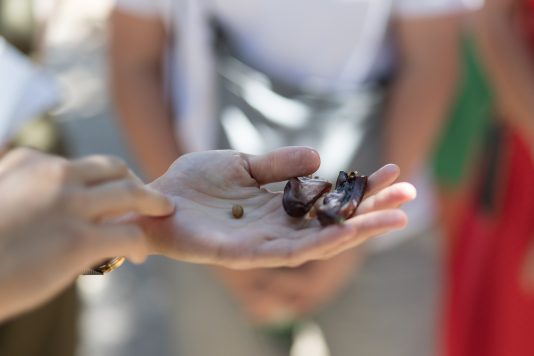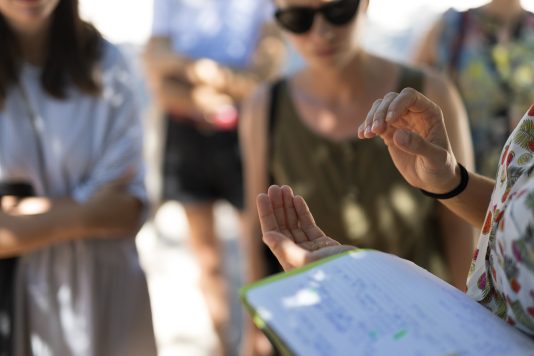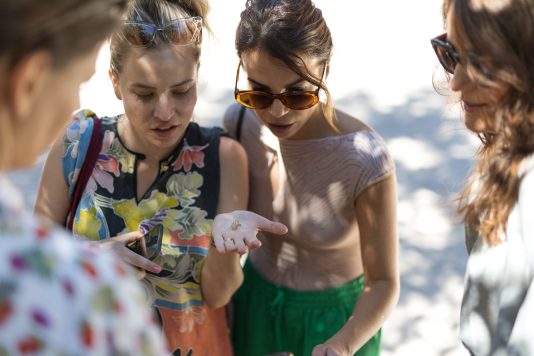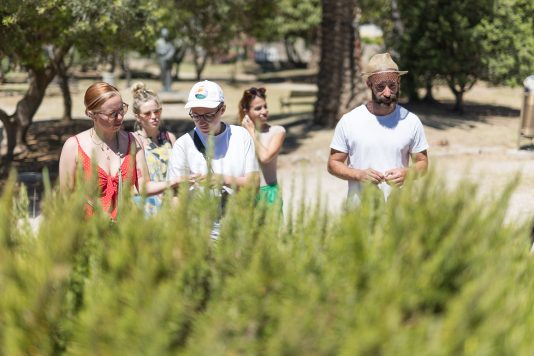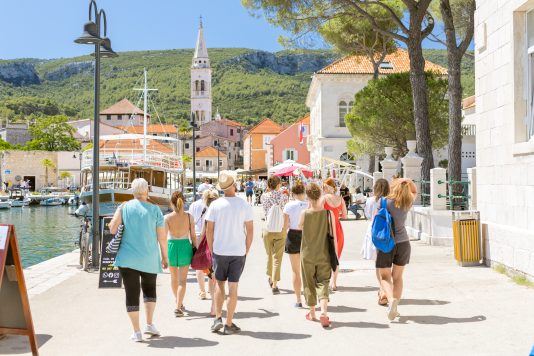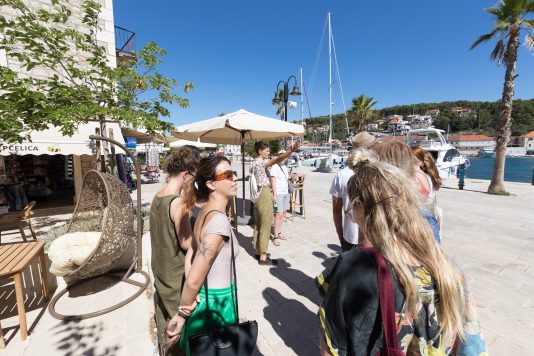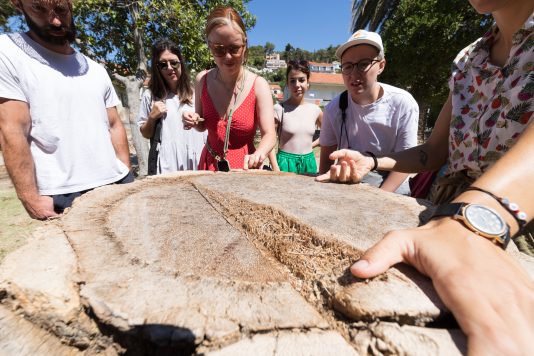SHAMAI GRIN
Context
The global context of this year’s programme is shaped by the need to react to the war in Ukraine and the ongoing concern about the global environmental crisis. Locally, our focus was on the creation of the new space of artistic production in which Lab852 was involved – Monade Gallery in Jelsa, Island Hvar, as a home of the main cultural event that we produce – Jelsa Art Biennial.
The space is in the historical centre of the town and as such it is a protected cultural asset. In terms of use, the space historically functioned as a food storage, and later as wine making and storage space. Due to its primary function (cooling, drying), the space is buried practically below the sea level and located in the “Kala” – a street in the grid of a Mediterranean city and according to more consistent urban plans, placed favourably in relation to the direction of the winds. Entrance from the street added a public and social function to it in the season of grape harvest and wine production when interactions were spontaneously happening in an open-door manner.
More recently, because of the fragmentation of the family property and changes in its functions brought by the mass tourism, the space functioned as a storage space for the surrounding businesses. Air conditioners, ventilation and garbage depot began to dominate the view of the kala and with the seasonal suspension of traffic on the waterfront (the parallel main street), all motor traffic of the place spontaneously moved to the kala, despite the bans. It negatively affected the safety of pedestrian traffic and the quality of life of residents. These circumstances resulted in conflicts between different users, which was important to take into account when designing a new use for the space and planning the program.
Taking into consideration the needs of different users of the inner private space (local environmental association, contemporary art production company and commercial business) as well as the outer public space (pedestrians, residents), architect Zdravko Krasić designed a space that has the possibility of functioning as a gallery, bar, shop, space for workshops and lectures. With the design of urban furniture that enables the simultaneous retention and passage of pedestrians, a balance was created between the private and the public use of this extremely limited space, which at the same time completely cancelled motor traffic through the street.
Architect Josipa Slaviček approached the space theoretically and, as part of this year’s activities and did preliminary research on the context of program development. Sustainability and circularity reflected in the ability of the space to programmatically adapt to seasonal changes and different types of users was also a conceptual basis of the exhibition program, used by artists in residence for their work on site specific projects. From this point of departure and taking into account the context of the space, its historical tasks, current state and vitality, the exhibition program leaves the very framework of the gallery and spreads along the street to the benefit of all residents and passers-by.
Program Postcards
Within previously mentioned context, program Postcards was developed to encourage research and evaluation of the lesser-known elements of the local heritage of Jelsa and the island of Hvar and their (re)interpretation outside of the usual tourist-commercial narrative. Using the very idea of a postcard as a format for presenting a place to “others”, the aim was to strengthen the sense of the local identity based on the richness of one’s own cultural and natural heritage, traditions, relationships, and community practices that contribute to their preservation and development. The program started with an Open Call for artists in June and consisted of four exhibitions that were results of four residencies during July, August and September. Including local community in every designed activity, and running parallel to the main part, the program was accompanied with two thematic walks with expert collaborator, an interactive shadow hunt on the island and Kids2kids workshop. The entire program took place in the year prior to Jelsa Art Biennial. As such, it was part of the process to develop a concept for Jelsa Art Biennial 2023.
Postcards 01_The Reflection of Gratitude
An important part of the Shamai Grin’s work on the relevant topic was a close cooperation with two expert collaborators on the project, Kristina Lazaneo and Josipa Slaviček. Josipa contributed as an architect who has done a preliminary research about the space that was a scenery for the installation, and Kristina was involved as a garden designer and an expert in plants, especially island ecosystems that are in focus of Shamai Grin’s work. If we were to define their work on a larger scale, it aims to express the fullness of Nature. Nowadays, when Nature is subordinate to the systems which she powers, and the children she gave birth to are divided by the search of many treasures which they turn into injuries, she cries out for understanding, support and reciprocal interaction. The Reflection of Gratitude is an installation by the artistic duo Shamai Grin that uses contemporary materials intertwined with the local flora as a mirror of the environment in which it is located, observing the multiplicity of local identities through the past, present, and future of the ecosystem, as well as the positive and the negative impact of humans on the biosphere. The installation serves as an indication of the possibility of connecting old and new, alloy and raw material, human and wind in the desire for a system that goes beyond human centrism and strives for balance.
In addition to the multitude of segments that serve to engage the critical mind of passers-by, The Reflection of Gratitude also has a clear aesthetic function, placed as an intervention in the old urban structure that highlights the beauty of the “ordinary” island vegetation, which is often overlooked. The artists intervened by setting up large metal plates with sometimes organic, sometimes strict contours, as a representation of transience and decay, but also the beauty of the moment, with the idea of showing how the human desire to control materials and the environment can function, if the balance of elements is respected. The installation interpolated into the architecture of Jelsa’s street, places of passage and gathering allowed nature to announce itself to the man by telling the story of the island, but also reminding how joint action is not just a dream and that nature responds only if we call out.
Shamai Grin is a Zagreb artistic duo that consists of two graphic designers, Jelena Šangarelo and Dina Šavorić. This duo integrates the principles of aesthetics using plants, primarily dealing with the creation of self-sustaining terrariums, art installations and education in which they strive to make the public aware of the importance of plants in everyday life.
Text written by Jelena Mićić
